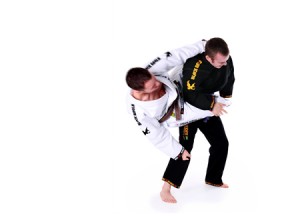Guest post submitted by Jake Roberts
 There is no doubt that the Internet, and social networking in particular, has resulted in many positive changes in martial arts today.
There is no doubt that the Internet, and social networking in particular, has resulted in many positive changes in martial arts today.
However, it is important to remember that social networking did not start with Facebook and LinkedIn. Martial artists have been avid users of the Internet almost since its birth. The social Internet started as a series newsgroups and martial artists have been using these media for over 20 years now.
Newsgroups and Forums for Martial Arts
The rec.martial-arts newsgroup, originally a Usenet group, has been going since at least 1990 and is still an active community on the Google Groups platform today. For many years it was the only place for martial arts students to share experiences and discuss styles and teaching methods.
After the Usenet Newsgroups the next stage in social media development was in privately run forums. Martialartsplanet.com has been running since 2002 and Mixedmartialarts.com since 1998. These forums were a step forward and gave greater opportunities for martial artists to network. Martial artists are often very passionate about their chosen style and discussions can certainly become heated.
While many martial artists have found newsgroups and forums very useful, they have never really been much more than a way for them to network with each other. The biggest change has come about more recently with the development of Facebook.
Facebook has helped many martial arts schools to become far more customer focused. One of the greatest benefits that Facebook gives to a martial arts school is that is provides a way for the school to stay in touch with students and parents.
Some parents are naturally wary of martial arts, but a good Facebook Page which shares news, events and grading results can help to engage parents which in turn can increase pupil retention.
A good case study is the 5 Elements Martial Arts Facebook Page. They use the page for announcements, to congratulate students and fighters, to plan additional training, to advertise seminars and to share photos of community events.
While it is important for martial arts schools to make use of social media it is still equally important to use traditional media and public events to promote their business. Handing out leaflets on a busy high street may be a little old fashioned but it is still one of the most effective ways to get new customers through the door.
Youtube – A Tool To Learn and Mock
Youtube is the ultimate social media tool for fighters. Many fights are shared on Youtube which provides invaluable information. By studying an opponent’s previous fights, weaknesses in their fighting style can be spotted and then exploited.
Sometimes Youtube is used to ridicule fighters after a contest. One such video is called “Why Bisping shouldn’t do pre-fight interviews”. The video shows excerpts of Michael Bisping explaining how he will easily beat Dan Henderson interspersed with shots from the fight of him being knocked down and knocked out. It received over 160K views since it was published in June 2011, and is not going to help rebuild Bisping’s confidence!
Social Media for Self Promotion
Several MMA fighters have made great use of Youtube and other platforms to promote themselves.
Mike Swick, a UFC fighter, has built a Youtube channel to share with his fans – http://www.youtube.com/user/OfficialSwick. Many of the videos cover his personal life, not all are about martial arts. The purpose is to develop a better bond with his fans. Videos include his visit to Afghanistan to train with soldiers and also shark hunting in Thailand. He provides some training advice and recipes too. He also has a Facebook Page and Twitter account.
UFC Social Media Bonuses
UFC, the Ultimate Fighting Championship, have also made good use of Facebook to build a bigger online audience. The UFC stream preliminary fights live on Facebook, but only to those who have “liked” the page. This allows them to directly advertise premium events to fans.
The UFC and Strikeforce are currently driving social media in the martial arts community. Dana White, president of the Ultimate Fighting Champion (UFC), has realised that many of their marketing goals can be achieved by encouraging the fighters to develop their own social media profiles. So to encourage fighters to get active on social media they are now giving bonuses based on Twitter usage.
Stan Schroeder reported on Mashable in May 2011 that “every three months, three fighters from each category will get a $5,000 bonus based on how many followers they’ve gained, the biggest percentage of new followers gained and the most creative tweets”.
UFC have continued with this policy, as Mike Swick recently Tweeted;
“Well I am trying to get more savvy on my Facebook thing since the big UFC social media meeting. So far I have posted a pic of healthy meal & 17 like. Give away free shirts 56 like. Then post a pic of me with busted up face 64 like. I am seeing the trend now….“
Well I am trying to get more savvy on my Facebook thing since the big UFC social media meeting. Any pointers? facebook.com/pages/Mike-Swi…
— Mike Quick Swick (@officialswick) July 17, 2012
The reality is that most martial arts today have a commercial element. Whether it is a school trying to attract more students or a multi-million dollar fight promotion company, social media is becoming a more important means of marketing for martial arts. However, it must be remembered that social media is still in its infancy and traditional media, such as advertising on television, radio and in the press, as well as leaflet campaigns, can still provide a very effective way to reach a larger audience.
Jake Roberts works for Martial Arts Shop Black Eagle in the UK. Become a fan on Facebook.






Hello – Thanks for sharing all the positive benefits of martial arts training for kids. excellent message – I would add teaching kids to be stronger Mentally, Physically, Emotionally, and Socially. http://parentslovemartialarts.com
Greg Horton
5th Degree Black Belt
http://parentslovemartialarts.com
Adsense is actually a really great program for those who maintain blogs, as
blogs get updated all the time and the Adsense possibilities are almost limitless.
20 percent of customers have the potential to
spend five times as much as they do currently A relatively
small amount of marketing effort creates the majority
of output. What Googlebot is looking to see in the Free Local Google Advertising Listings is quite another.